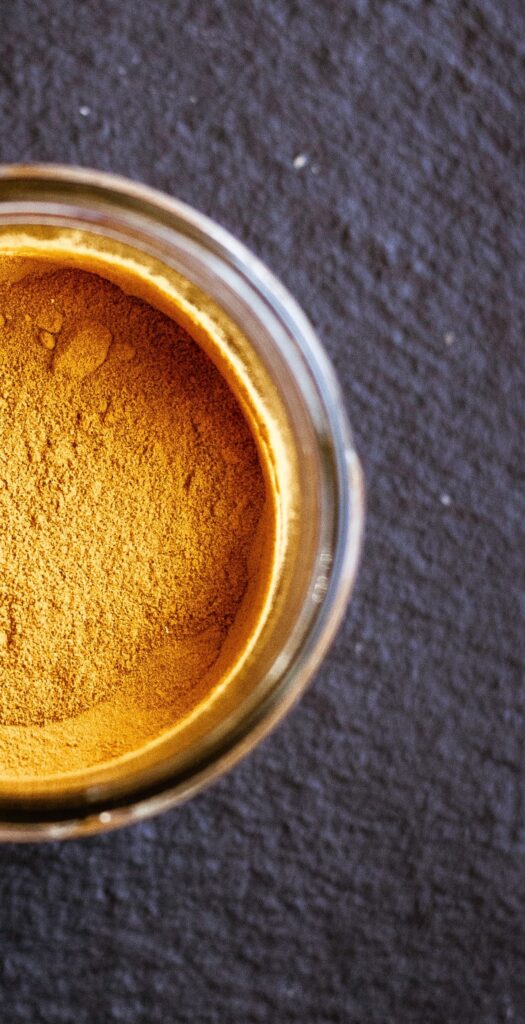Turmeric, also called Saffron of the Indies, belongs to the Zingiberacee family, herbaceous plants well known since ancient times because they are able to provide numerous useful substances in the preparation of food, medicines, dyes and perfumes. The zingiberaceae are widespread in tropical countries, particularly in Southeast Asia and especially in India, which constitutes one of the richest and most diverse regions for this family with 20 genera and over 200 species. In particular, regarding the medicinal action, also Curcuma longa is among the most important genera.
Curcumin, the main biologically active component of the turmeric rhizome in the medical field, represents, bioavailability permitting, a natural product with good potential, capable of acting on various areas of our body, especially thanks to its anti-inflammatory, antioxidant, antimicrobial and antitumor power.
Defined by Ayurvedic medicine (ancient Indian medicine which is based on the knowledge of the body and its links with the mind and spirit; for which health is conceived as a condition of psychological, environmental and physical balance) as the queen of spices, turmeric helps to cleanse the liver and purify the blood, it also promotes good digestion. It shows an antioxidant action and, unlike other antioxidants, the curcuminoids in curcumin seem to be able not only to neutralize free radicals, but also to prevent their formation. Additionally, it has anti-inflammatory properties, but lacks the unpleasant side effects of anti-inflammatory drugs.
Curcumin interacts with white adipose tissue to suppress chronic inflammation, inhibiting the infiltration of macrophages and activation of the Nuclear Factor kB (NF-kB). In white adipose tissue it reduces the expression of potent proinflammatory adipokines: Tumor Necrosis Factor alpha (TNF-alpha), Monocyte-1 Chemoattractant protein (MCP-1) and Plasminogen Activator type-1 inhibitor (PAI-1).
Curcumin lowers the levels of Tumor Necrosis Factor alpha (TNF-alpha, proinflammatory adipokine), of the Reactive Protein C -PCR- (inflammatory protein) and the levels of expression of the Cyclo-Oxygenase-2 -COX-2 protein (enzyme involved in the inflammatory response).
It is able to induce the expression of Adiponectin which is the main anti-inflammatory agent secreted by adipocytes. Curcumin interacts with white adipose tissue and inhibits the proliferation of preadipocytes, therefore it is essential for the suppression of adipocyte differentiation and its development towards the mature stage.

Curcumin decreases hyperinsulinemia, glucose intolerance and the HOMA-IR index (index used to evaluate insulin resistance) by decreasing the phosphorylation of the IRS-1 serine which is the insulin receptor substrate.
Its powerful direct antioxidant action is due to the strong action on the activity of Glutathione Peroxidase (GPx) in the muscle. Curcumin also protects against neuronal damage associated with neuroinflammation caused by obesity.
Turmeric does not have a slimming action, but its intelligent use could create the conditions for possible weight loss. Obesity is associated with inflammation, so to the extent that turmeric helps to extinguish inflammation, it also creates the conditions to work on weight loss.
Curcumin plays, as mentioned above, a vigorous anti-inflammatory, antioxidant, antimicrobial and antitumor role; in order to perform this task in an optimal way, it needs the support and collaboration of other active ingredients: quercetin and peperine.
CURCUMIN, QUERCETIN AND PIPERINE: A SYNERGIC TRIAD
Quercetin is a polyphenol present in abundance in some foods: onion, turnips, broccoli, lettuce, green tea, orange and apple. The intake of foods rich in quercetin has a positive action in modulating inflammatory phenomena, especially allergic ones. Inflammation is our most natural reaction to external stimuli and histamine, produced by the basophils and mast cells of the tissues, is one of the first mediators that serve to develop inflammation. Inflammation is very useful when it is regulated and moderate, it becomes pathological when it is in excess.
Black pepper works in synergy with Curcumin, enhancing its absorption; therefore, together with piperine and quercetin, the benefits of curcumin occur systemically in the body and not only in the intestine.
BIBLIOGRAPHY
Vanda Magazine, Issue 5; edited by R. Russo, CEO of Vanda
“Knowing the Polyphenols”, Taken from Vanda Magazine n ° 2-5

